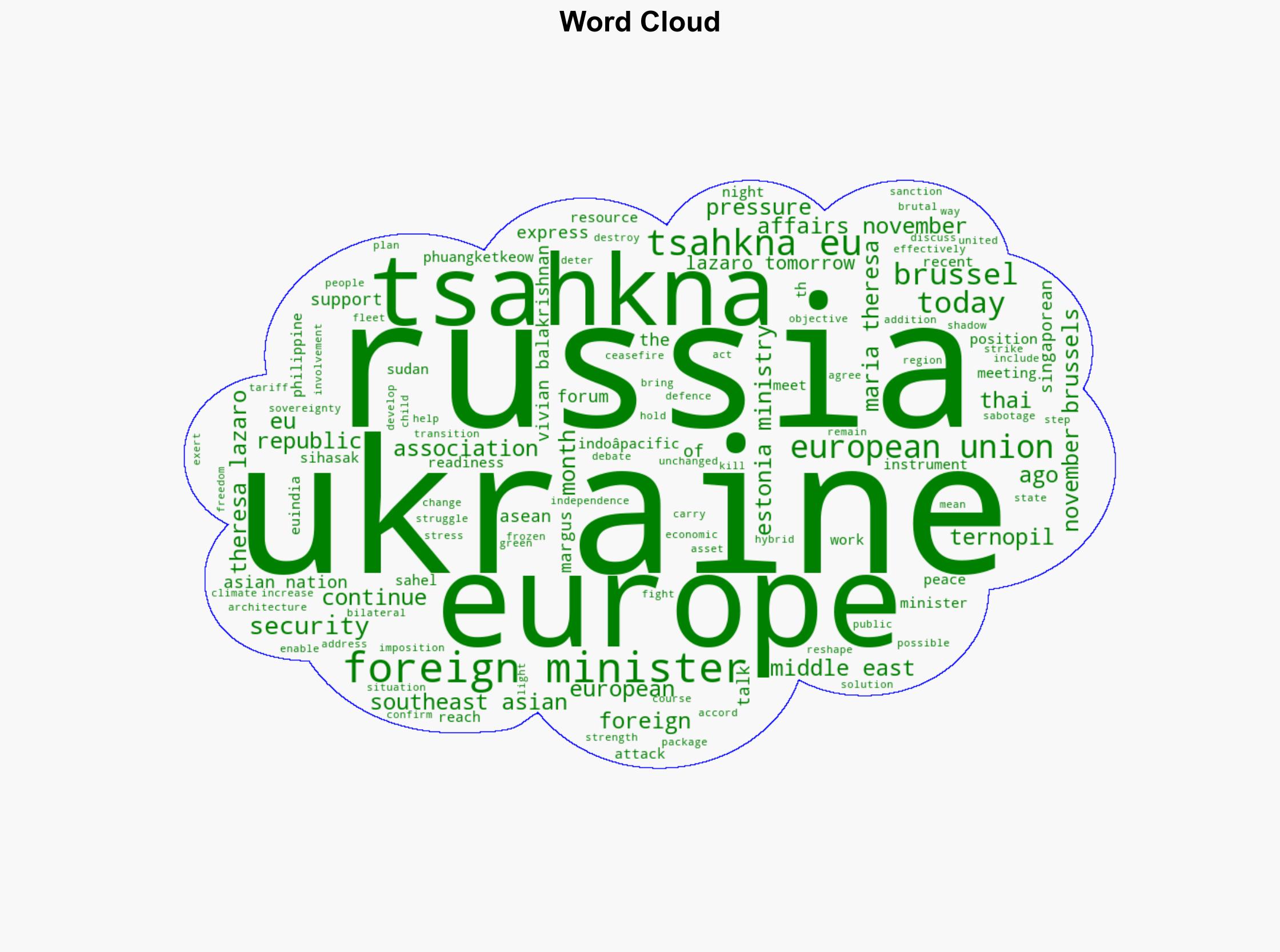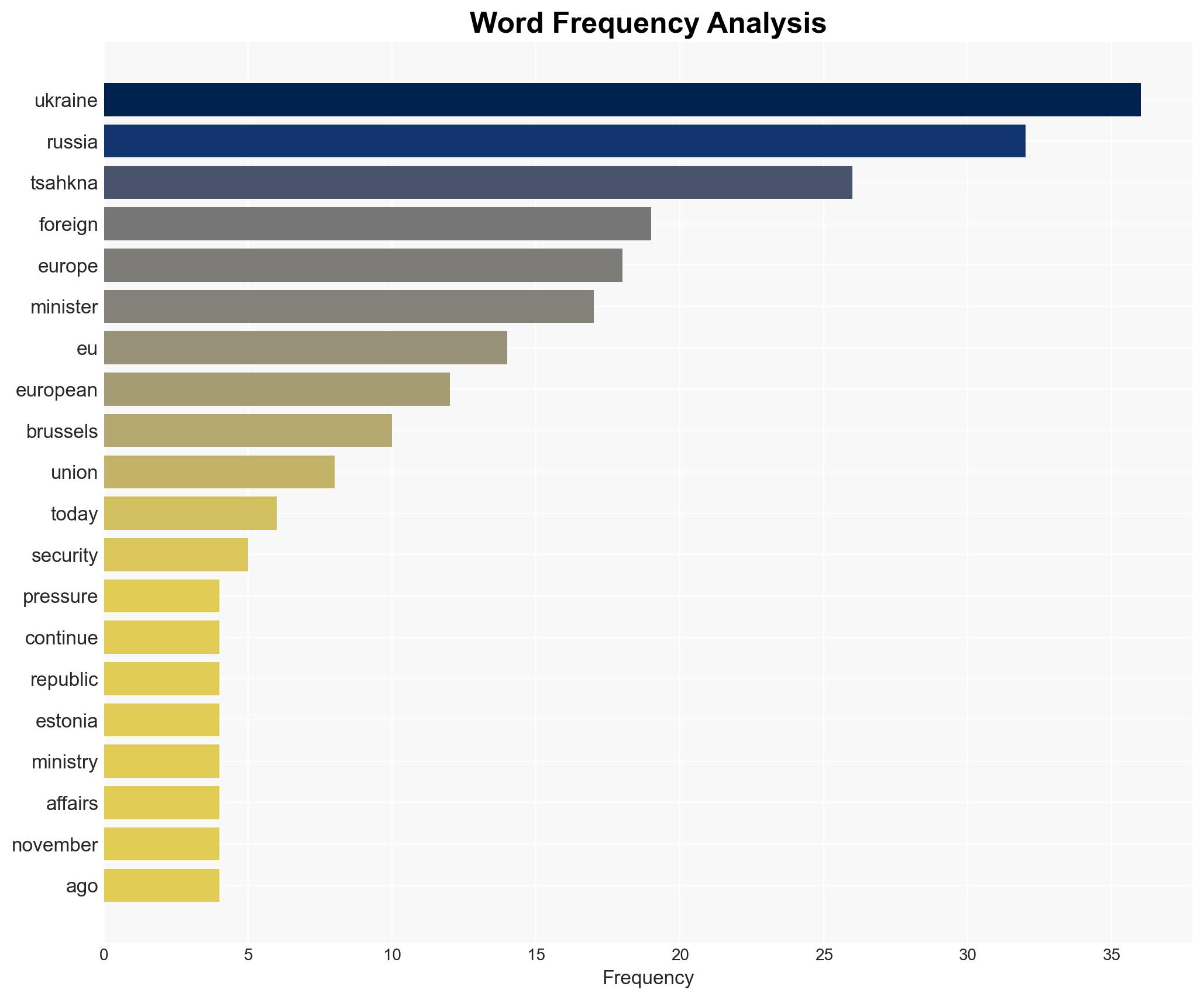Foreign Minister Tsahkna at the EU foreign ministers’ meeting Europe has the means to step up pressure on Russia and to continue supporting Ukraine – Globalsecurity.org
Published on: 2025-11-21
AI-powered OSINT brief from verified open sources. Automated NLP signal extraction with human verification. See our Methodology and Why WorldWideWatchers.
Intelligence Report:
1. BLUF (Bottom Line Up Front)
With a moderate confidence level, the most supported hypothesis is that the European Union, led by Foreign Minister Tsahkna, will continue to increase pressure on Russia while maintaining support for Ukraine. The recommended action is for the EU to enhance diplomatic engagement with non-EU nations to consolidate a broader international coalition against Russia’s actions.
2. Competing Hypotheses
Hypothesis 1: The EU will increase pressure on Russia through additional sanctions and support for Ukraine, aiming to force a change in Russia’s strategic calculus.
Hypothesis 2: The EU’s actions will remain largely symbolic, with limited tangible impact on Russia’s behavior due to internal divisions and competing priorities within the EU.
Hypothesis 1 is more likely due to the unified stance expressed by EU foreign ministers and the ongoing development of new sanctions and deterrents against Russia’s shadow fleet, as indicated by Foreign Minister Tsahkna.
3. Key Assumptions and Red Flags
Assumptions: The EU has the political will and resources to implement effective sanctions and support measures. Russia will respond to increased pressure by altering its strategic approach.
Red Flags: Potential EU member state disagreements on the extent and nature of sanctions. Russia’s potential use of hybrid warfare tactics to undermine EU unity.
4. Implications and Strategic Risks
Increased EU pressure on Russia could lead to several risks, including heightened cyber-attacks on EU infrastructure, economic retaliation affecting EU energy supplies, and intensified Russian disinformation campaigns. The EU’s support for Ukraine could escalate the conflict, drawing in additional regional actors and complicating diplomatic resolutions.
5. Recommendations and Outlook
- Enhance intelligence-sharing and cybersecurity measures within the EU to mitigate potential Russian cyber threats.
- Strengthen diplomatic ties with ASEAN and Indo-Pacific nations to build a broader coalition against Russian aggression.
- Best-case scenario: Russia agrees to a ceasefire and engages in meaningful negotiations, leading to de-escalation.
- Worst-case scenario: Russia intensifies its military actions and hybrid warfare tactics, destabilizing the region further.
- Most-likely scenario: The EU continues to apply pressure with incremental impact on Russia’s strategic decisions, while maintaining support for Ukraine.
6. Key Individuals and Entities
Margus Tsahkna, Foreign Minister of Estonia; European Union; Russia; Ukraine; ASEAN; Indo-Pacific Forum.
7. Thematic Tags
Structured Analytic Techniques Applied
- Cognitive Bias Stress Test: Expose and correct potential biases in assessments through red-teaming and structured challenge.
- Bayesian Scenario Modeling: Use probabilistic forecasting for conflict trajectories or escalation likelihood.
- Network Influence Mapping: Map relationships between state and non-state actors for impact estimation.
Explore more:
National Security Threats Briefs ·
Daily Summary ·
Support us





